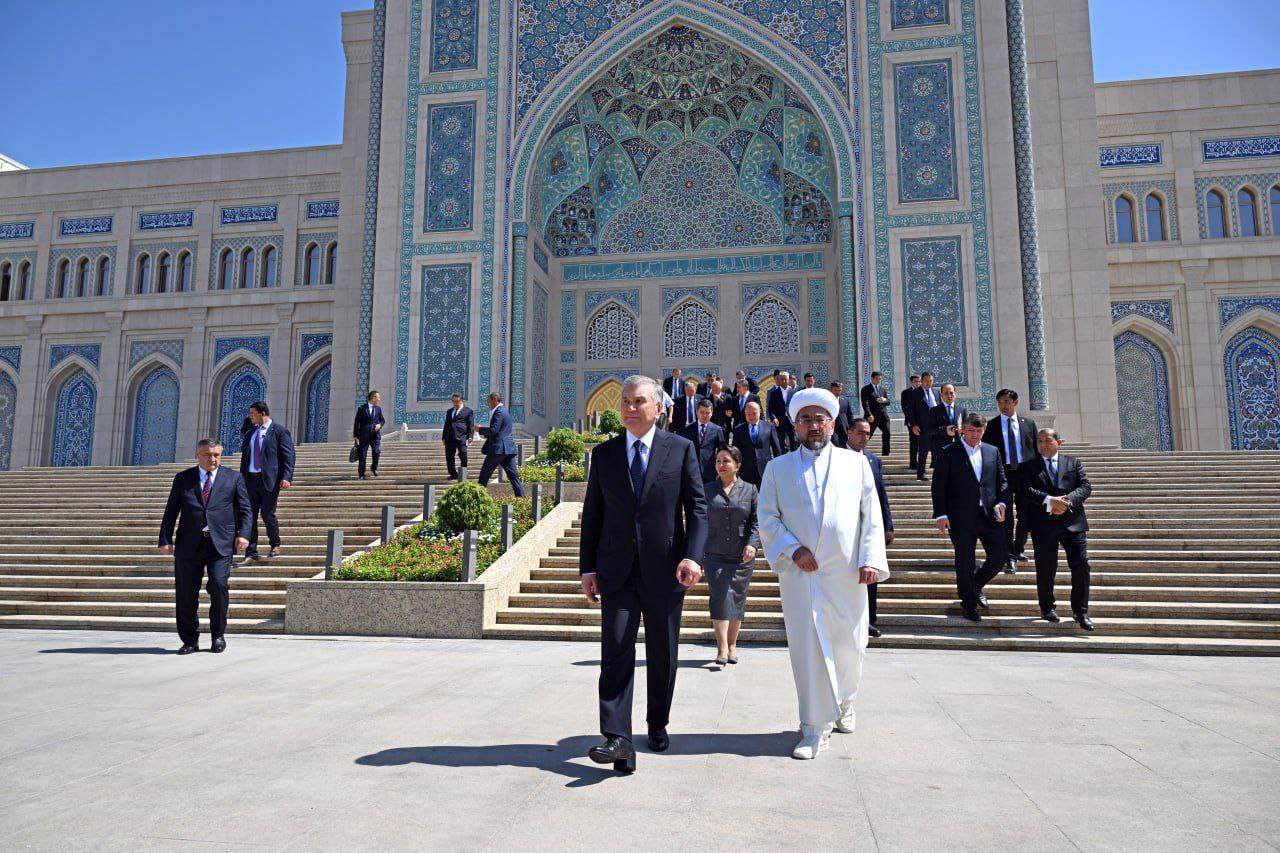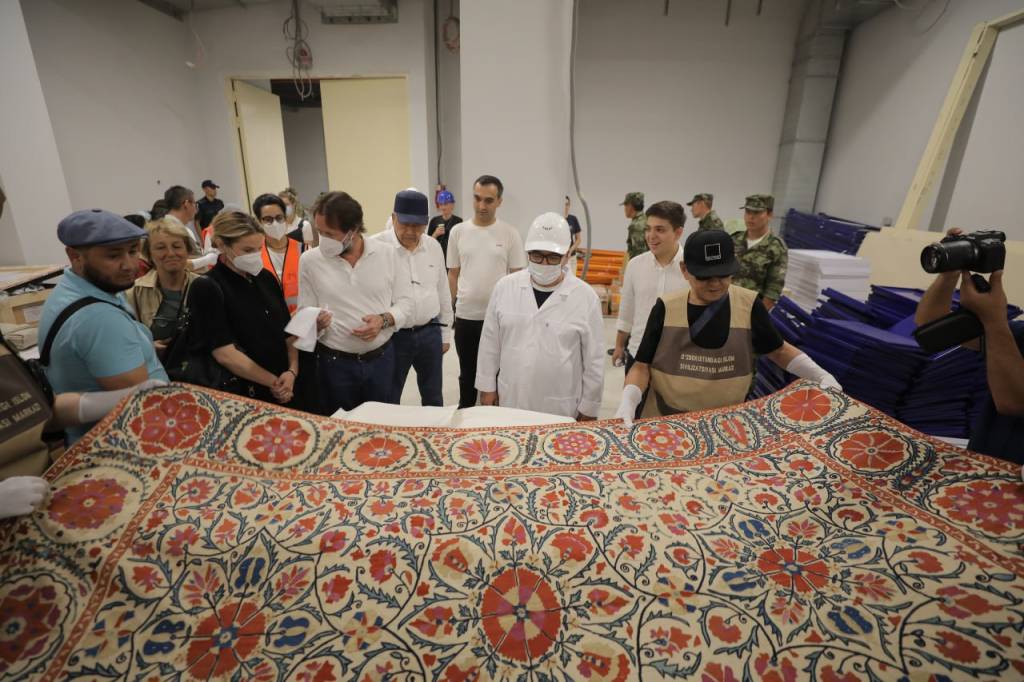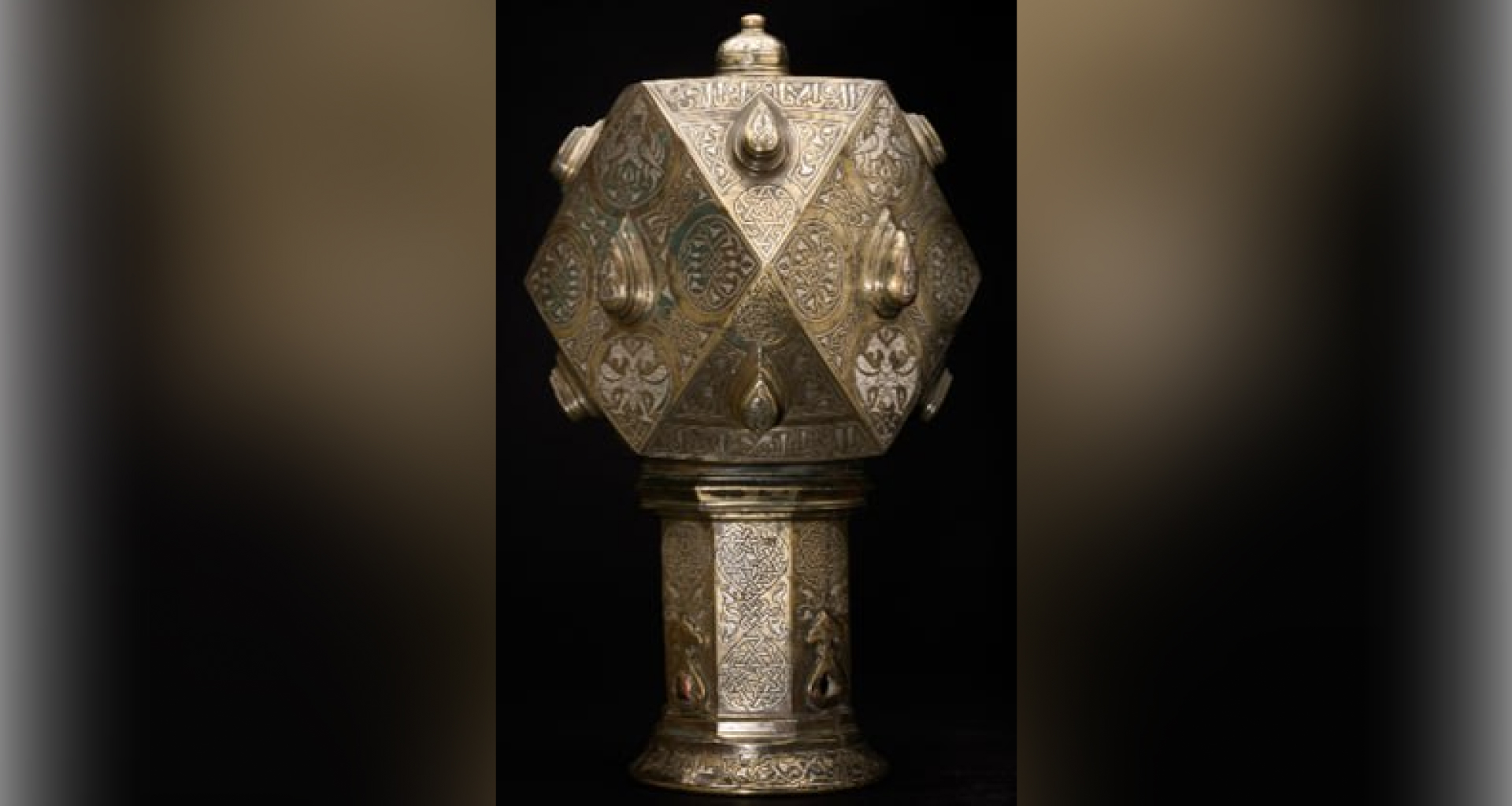The priceless heritage returning to Uzbekistan

Throughout the various periods of our homeland’s history, world-renowned civilizations, great empires, cities worthy of admiration, and priceless architectural monuments emerged. In particular, the priceless cultural heritage masterpieces left by our great ancestors are preserved today not only in our country but also in various parts of the world in foreign collections, foundations, libraries, and museums. Today, thanks to the initiative of President Shavkat Mirziyoyev, processes are underway to bring such unique cultural monuments back to the homeland. The following article by Firdavs Abdukhalikov, Director of the Center of Islamic Civilization in Uzbekistan, discusses this very topic.
In recent years, extensive work has been carried out to preserve, study, and popularize the rich cultural heritage passed down from our ancestors, thanks to the initiatives of President Shavkat Mirziyoyev. Construction of the Center of Islamic Civilization in Uzbekistan being built on the basis of our President’s great ideas has reached its final stage.
The President’s high attention
So far, on the initiative of our President, the World Society for the Study, Preservation, and Promotion of the Cultural Legacy of Uzbekistan has conducted research in more than 30 countries, studying over 200 museums, libraries, and collections where our heritage is preserved. As a result of these efforts, an 80-volume series of book-albums titled Cultural Legacy of Uzbekistan has been published.
Yet, it is natural that many wondered whether it would ever be possible to bring this historical heritage back to its true homeland — Uzbekistan. Today, thanks to the initiatives and support of our President, these dreams are coming true, exemplified by the Center of Islamic Civilization in Uzbekistan.
On January 29 of this year, President Shavkat Mirziyoyev visited the Center of Islamic Civilization and specifically emphasized the importance of enriching its exhibitions with samples of our nation’s rich cultural heritage, as well as giving special instructions to repatriate these artifacts from major foreign collections and auction houses.
During this period, we have visited more than 50 libraries, museums, and private collections in Saudi Arabia, Kuwait, Malaysia, Turkey, the United Kingdom, Italy, Germany, and Russia. In particular, delegations consisting of several scholars and researchers carried out fruitful working trips to the United Kingdom.
It is well known that the United Kingdom is renowned for its major museums, educational institutions, and auction centers. Notably, Sotheby’s and Christie’s are considered among the largest trading organizations operating in this field. Nearly 600 historical objects have been purchased for the Center of Islamic Civilization in Uzbekistan from both of these auction houses, as well as from private collectors and art galleries.
The largest collection of Sogdian Textiles
Among these items, it is worth paying special attention to the artifacts related to the ancient Sogd region.
Three years ago, at an international congress held in Samarkand, the representatives of the Museum of Islamic Art in Malaysia caused a great stir when they shared information about a Sogdian coat originating from the territory of Uzbekistan. We also looked with admiration at the metal vessels from the Sogdian period preserved in the State Hermitage Museum in Russia and regretted that we did not have such rare exhibits in our own country.
Indeed, for thousands of years, various nations and ethnic groups have lived in the territory of our country. Among the communities that played an important role in the formation of the Uzbek people through historical processes, the Sogdians left a significant mark on world civilization.
Now, to see these artifacts the products of our ancestors’ labor and intellect it is enough to visit the Center of Islamic Civilization in Uzbekistan. Today, Sogdian textile products purchased from British collections adorn the exhibition of the Center. In terms of their value and scale, these items constitute the largest collection of Sogdian textiles in the world.
Among this collection of 25 rare exhibits, 21 are fabric fragments of various sizes, and four are complete coats. These textiles were woven in the territories of Sogdiana during the 5th–8th centuries and were purchased from several art dealers and collectors in the United Kingdom.

The symbol of Seljuk power
The Seljuks, who established a vast empire stretching from Central Asia particularly the lower reaches of the Syr Darya to Anatolia, ruled for more than three centuries and left behind a rich material and cultural legacy. Today, this dynasty’s historical heritage holds an important place in world museums, private collections, and manuscript centers.
In May of this year, jewelry pieces from the Seljuk era that were auctioned at Christie’s in London were also brought back to Uzbekistan. This collection, consisting of 35 exquisite ornaments, serves as evidence that our ancestors were at the forefront of jewelry craftsmanship and design eight centuries ago.
The royal tughra a symbol of the Seljuk state and its might has also been returned to Uzbekistan. During military campaigns, it was placed at the very top of the sultan’s tent. Remarkably, it features the image of a double-headed eagle.

The eagle has long been interpreted as a primary symbol of power, strength, and statehood. During the Seljuk era, it represented the political might of the empire and its dominion over both East and West. It is noteworthy that such masterpieces cannot be found in any other Central Asian country. Moreover, artifacts belonging to dynasties that emerged from our region and gained fame across vast territories of the world such as the Samanids, Ghaznavids, Qarakhanids, and Khwarazmshahs are also being brought to our country for the first time.
A fragment of Sahibqiran’s Qur’an
It is worth proudly noting that historical objects belonging to Amir Temur and the Timurids are highly valued in the global antiquities market. We recently learned that a single page from the Mi‘raj-nama manuscript, dating back to the era of Shahrukh Mirza, was sold at a Christie’s auction for more than 2 million pounds sterling.
For this reason, we have made a determined effort to repatriate artifacts related to Sahibqiran Amir Temur and the Timurid era. Among them, special mention should be made of a fragment from the monumental Qur’an commissioned by Amir Temur and copied by the calligrapher Umar Aqta in Samarkand around the year 1400.
According to legend, Umar Aqta first prepared a tiny Qur’an manuscript that could fit inside a signet ring for Sahibqiran. However, the great ruler remarked that such a small copy was not befitting the majesty of the Holy Word of Allah, and that its magnificence and greatness needed to be demonstrated. As a result, in a short time the calligrapher produced what became the largest copy of the Qur’an in the world.
At last, we have succeeded in bringing back two lines from this Qur’an, which was the personal possession of Sahibqiran. Until now, there were no historical items in our country directly connected to Amir Temur himself.
In addition, the Center has acquired a royal robe from the era of Amir Temur, a copy of Ibn Sina’s Kitab al-Shifa transcribed in Herat during the reign of Husayn Bayqara, as well as miniatures, documents, textile samples, swords, and daggers from the Baburids period all of which have now become the property of the Center of Islamic Civilization in Uzbekistan.
The Baburid legacy returns to the homeland
The Baburids, who ruled India for nearly three and a half centuries, hold an honorable place in world history and culture. Unfortunately, until now, it was impossible to see a single manuscript or significant exhibit related to the Baburids in their ancestral homeland. Now, on the instructions of our esteemed President, dozens of artifacts from the Baburid era are being brought back to our country.
So far, two Qur’an manuscripts created during this dynasty, a copy of Jalal al-Din Rumi’s Masnavi-yi Ma’navi, nearly ten miniatures depicting Baburid rulers and princes, as well as samples of embroidery and textiles, have been delivered to the Center of Islamic Civilization in Uzbekistan. Among them is also a cloak that historians claim personally belonged to Mirzo Babur.
It is well known that such garments, inscribed with various supplications from the Qur’an, were specially sewn for rulers. The fabric of the cloak bears dozens of verses and prayers, arranged as a supreme example of the art of calligraphy. Visitors to the Center of Islamic Civilization in Uzbekistan can also see Babur Mirzo’s personal signature and a Qur’an manuscript copied in the special alphabet he created.
Our treasure in the eyes of the world
On July 7–8, in cooperation with Uzbekistan’s Embassy in the United Kingdom, the Center of Islamic Civilization in Uzbekistan organized exhibitions of these artifacts at the Sotheby’s and Christie’s auction houses in London.
“The return of a portion of your country’s priceless treasures is a major cultural event carried out under the personal initiative of the President of Uzbekistan, aimed at inspiring the younger generation. Such practical steps to reclaim one’s heritage provide a strong foundation for cultural revival”, said David Armstrong-Jones, Earl of Snowdon, Honorary Chairman of the Christie’s Board of Trustees and a representative of the Royal Family.
“It is a great honor for us to cooperate with the Center of Islamic Civilization in Uzbekistan, which is being built on the initiative of the President of Uzbekistan”, said Benedict Carter, Sotheby’s Representative for Eastern Heritage. “We are pleased to have contributed to the return of monuments of special importance in the history of Central Asia to their homeland”.
During this visit, agreements were also reached with well-known London art dealers and representatives of auction houses. As a result, nearly 600 additional items were selected from auction and art dealer collections for the museum exhibition of the Center. This list was approved by members of the prestigious Scientific Council of the Center in accordance with the instructions of our government.
As you know, on February 19, the Minister of Hajj and Umrah of the Kingdom of Saudi Arabia, Tawfiq bin Fawzan Al-Rabiah, presented our President with a fragment of the Kiswah the covering of the Kaaba. Following the order of our head of state, this rare gift was delivered to the Center of Islamic Civilization in Uzbekistan. Additionally, the covering of the Kaaba door was brought from Saudi Arabia this summer through the President’s personal initiative. At present, this unique exhibit is placed in the First Renaissance section of the museum, in the gallery dedicated to the spread of Islam in Central Asia.
“Uzbekistan Has a Great History...”
On August 29 of this year, during the President’s visit to review the ongoing construction works in our capital, an unforgettable event took place in the history of our Center. While getting acquainted with the progress, the Head of State provided valuable advice and recommendations regarding the nearly completed construction of the Center.
“Uzbekistan has a great history. The scientific and cultural heritage created by our great ancestors has left an indelible mark in human history”, said our President. “I am confident that every foreign guest who visits this Center will leave with deep respect for the Uzbek people, who possess such a magnificent history and culture.”
Indeed, the impressions shared by the guests visiting the Center confirm the words of our Head of State. Not long after this visit, in the first ten days of September, three major delegations from foreign countries arrived. Distinguished guests from around the world visited the Center and expressed their admiration for the creativity and intellect of our people and the initiatives of our President.
Last week, Paolo Zampolli, the U.S. President’s Special Envoy for Global Partnerships, visited our Center and gave a high evaluation of the work accomplished here.
“I see His Excellency the President as a great leader, a symbol of integrity, an ambassador of peace, and a true leader of Uzbekistan’s Renaissance”, said Mr. Paolo Zampolli.
Recently, the Governor of Saint Petersburg, Alexander Beglov, and Zafer Sarıkaya, Deputy Chairman of Turkey’s ruling Justice and Development Party, also visited the Center of Islamic Civilization in Uzbekistan.
While familiarizing himself with the Center’s activities, Alexander Beglov remarked:
“Only great leaders of a nation are capable of carrying out such monumental tasks to study and preserve their country’s living heritage”.
The Turkish guest emphasized that the Center of Islamic Civilization in Uzbekistan is a source of pride not only for Uzbekistan but also for all Turkic-speaking nations and expressed deep gratitude to President Shavkat Mirziyoyev, who stands at the forefront of such noble endeavors.
Indeed, the Center of Islamic Civilization in Uzbekistan is a vivid result of the economic and cultural reforms being carried out in New Uzbekistan.
Commitment to noble goals
At present, the establishment of the full-fledged activities of the Center of Islamic Civilization in Uzbekistan and the enrichment of its internal content has become not only a nationwide effort but also an international megaproject.
It is noteworthy that in the summer of 2024, the first national forum with the participation of more than 600 of our scholars and an international congress with nearly 500 foreign scholars were organized on this very topic. Following these events, the scholars sent a letter of gratitude to our Head of State, pledging to work tirelessly in the fields of science, education, and the study and promotion of Uzbekistan’s cultural heritage, promising to act in full unity. In turn, our President, in his address to the Congress participants, emphasized that the doors of the Center of Islamic Civilization in Uzbekistan will always remain open for all scholars collaborating with us.
Of course, the examples mentioned above represent only a small portion of the ongoing work. Much could also be said about the exhibitions, libraries, conference hall, laboratory, special rooms for representatives of international organizations, research platforms for local and foreign scholars, children’s area, school of calligraphy, and many other aspects being created at the Center.
At present, we — a team of 1,500 scholars and experts in cooperation with the Board of Trustees of the Center of Islamic Civilization in Uzbekistan, the Academy of Sciences of Uzbekistan, and relevant institutions and organizations, are working on more than 800 scientific and innovative projects aimed at enriching our exhibitions. We are immensely proud to be participants in the implementation of this grand project.
We express our gratitude to our President for this high level of attention and care, as well as for the conditions created to study Uzbekistan’s cultural heritage and to showcase our nation’s place in world civilization. We are confident that the Center of Islamic Civilization in Uzbekistan will remain a symbol of our national pride and spiritual achievements for future generations.
Firdavs Abdukhalikov
Director of the Center of Islamic Civilization in Uzbekistan
Most read

More than 80 historical artifacts related to Uzbekistan are planned to be returned to our country

An extended meeting of the Scientific Council took place at the Center of Islamic Civilization

About a house even greater than the Kaaba...











